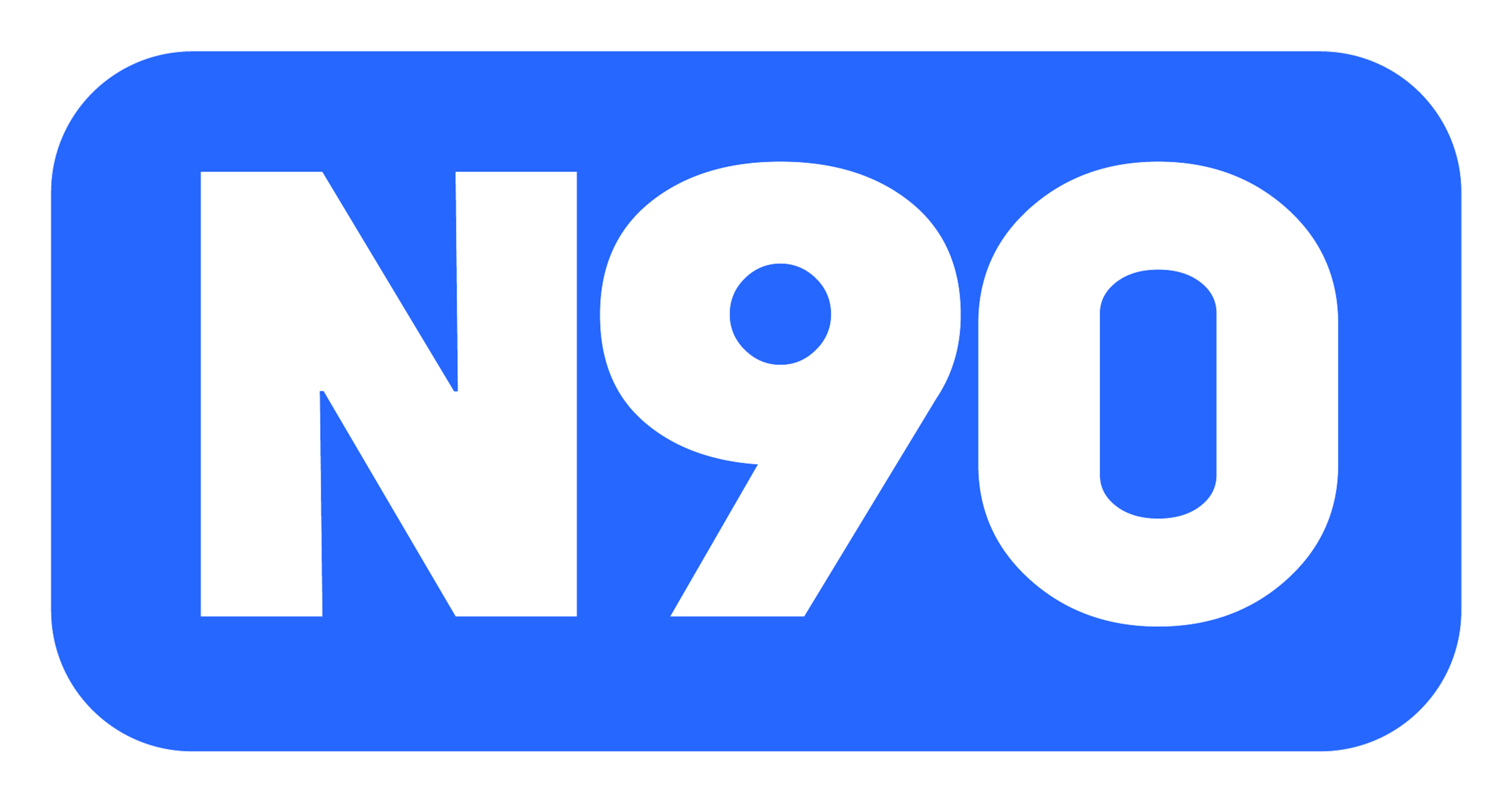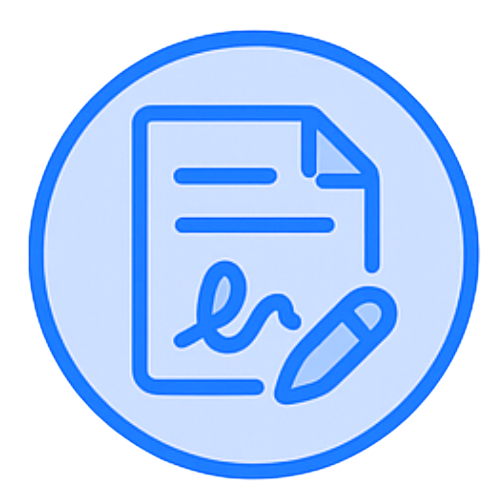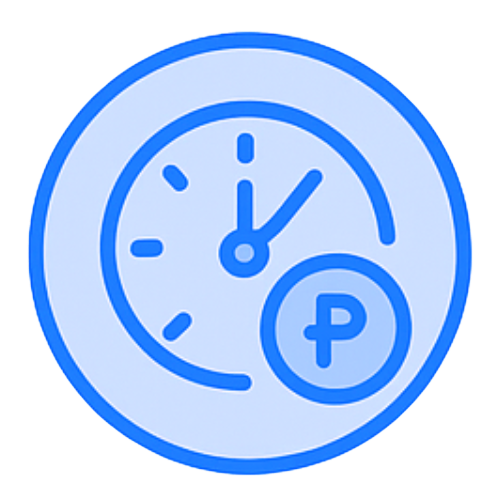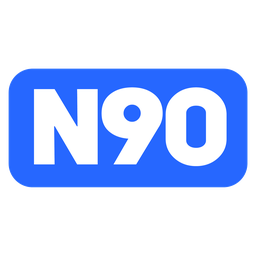As a SME owner or business decision-maker, you understand that loan investment in Philippines in your team’s education and skills is crucial for long-term business growth and competitiveness. Recognizing the importance of continuous learning, recently, the Department of Budget and Management (DBM) allocated a record ₱924.7 billion for the education sector in the 2024 national budget, out of which ₱1.5 billion is allocated for CHED’s Student Financial Assistance Program.
Despite this strong support, many businesses still face challenges in accessing the right financial resources to upskill employees, sponsor advanced training, or invest in educational opportunities that drive innovation and productivity.
To bridge this gap, a wide range of educational loan programs and financial assistance options are available across the country. With these initiatives, SMEs can access timely funding to empower their workforce, manage cash flow, and ensure sustainable growth.
In this blog, we’ll discuss the educational loan investment in the Philippines. From government-backed student loan programs to private and institutional lending solutions, this guide will help you understand each option's eligibility, benefits, and repayment terms.
Why Educational Loan Investment in the Philippines Matters
An educational loan is a form of financial assistance that enables individuals or businesses to invest in learning. The expectation is that the long-term return through higher income, productivity, or business growth will outweigh the cost of borrowing.
As an SME owner in the Philippines, you know that a skilled, educated workforce is the backbone of sustainable business growth. However, many talented individuals cannot complete their education due to financial constraints. By understanding and supporting educational loan investments, your business can benefit in several ways. Here’s why it is important:
- Access to a More Skilled Talent Pool: Many Filipino students, particularly from low-income families, are unable to finish their education due to financial constraints, with only 75.7% completing two years of senior high school. Affordable education loans can help bridge this gap, enabling more students to complete their studies and providing your business access to a larger, qualified talent pool.
- Addressing Learning Crisis and Improving Outcomes: The Philippines faces a learning crisis, with 91% of 10-year-olds unable to read age-appropriate text. Loan-funded projects backed by institutions like the World Bank aim to improve education quality and recovery. When more people can access education, communities become more prosperous, creating a healthier business environment for SMEs. Education loans help break the cycle of poverty, leading to a more stable customer base and workforce.
- Filling Funding Gaps: The national budget for higher education is limited, making loan programs necessary to meet the funding requirements of a large student population. Education loans also support private schools and educational institutions, helping them bridge financing gaps and continue providing quality education, especially when government subsidies are delayed.
- Supporting National Development Goals (NDG): Investments in education, including through loans, are aligned with the country’s development plans to build human capital, improve workforce skills, and sustain economic growth in compliance with Sustainable Development Goals (SDGs) by the United Nations. Loan-funded education reforms and projects are designed to ensure that the curriculum meets labor market needs and that teachers receive necessary training, ultimately leading to a more competitive workforce.
At n90, we understand that the success of your business is closely tied to the development of human capital in the Philippines. That’s why we offer tailored lending solutions, from bridge loans to invoice factoring, to help you manage cash flow, invest in employee training, or even support educational initiatives within your community.
Types of Educational Loan Investments in the Philippines
As we recognize the value of educational loans, it’s vital to examine the different programs available to meet the needs of students across the country. The educational loan options are designed to help students and their families finance tuition and other school-related expenses.
These loans can be broadly categorized into government-sponsored programs, private and NGO loans, and educational institution-based loans. Let’s explore different types of educational loans available in the Philippines:
Government Educational Loan Investment Programs
Navigating educational finances can be challenging for many families in the Philippines. Recognizing this, the government has introduced several loan programs to provide accessible financial aid to students pursuing higher education.
1. CHED UniFAST Student Loan Program
The CHED UniFAST Student Loan Program (SLP) is a government initiative designed to support Filipino students’ expenses for undergraduate and graduate studies, including licensure exam reviews, medicine, and law. It covers tuition, school fees, books, learning materials, and allowances.
Benefits
- No interest if the loan is paid within the 12-month term
- Can be used for various education-related expenses
- Open to undergraduate, graduate, and licensure review students.
Application Process
- Fill out the CHED UniFAST application form and submit it to your school with the required documents.
- The school screens and endorses the application.
- Upon approval, the student signs the loan agreement.
- Funds are disbursed through a DBP account opened by the student.
Eligibility Criteria
- Filipino undergraduate or graduate students in SUCs, CHED-recognized LUCs, or quality-assured private HEIs
- Must be enrolled in a CHED-registered program
- First-time applicants, or those who have fully paid a previous loan cycle
Documentation and Requirements
- Certificate of Registration/Enrollment
- Income Tax Return (ITR) or proof of family income (applicant and co-maker)
- School ID (applicant)
- Government-issued ID (co-maker)
- 1x1 pictures (applicant and co-maker)
Loan Amount and Coverage
- Maximum of ₱60,000 per program cycle
- Covers tuition, school fees, books, learning materials, and allowances.
Repayment Terms and Conditions
- Must be repaid within 12 months
- No interest if repaid within the term; interest applies if overdue
- Payment via DBP branches or through the school.
2. GSIS Educational Loan (GFAL)
The GSIS Educational Loan, also known as GFAL, is specifically tailored for the children or relatives of active GSIS members. This is a “study now, pay later” program for active GSIS members, allowing up to two beneficiaries per member. GFAL is ideal for families of government employees who need time to establish financial stability after graduation.
Benefits
- The loan features a competitive fixed interest rate.
- Repayment only starts after the grace period, further supporting the financial stability of borrowers and their families.
- Loan proceeds are paid directly to the school every term, ensuring timely settlement of tuition and other fees and simplifying the process for both students and educational institutions.
Application Process
- Apply through GSIS branches or the online portal.
- Submit the required documents.
- Await approval and fund release.
Eligibility Criteria
- Be active GSIS members with at least 3 years of paid premiums (or 15 years for non-permanent roles).
- Have no delinquent or past-due GSIS loans.
- Not be on unpaid leave.
- Have a net take-home pay that meets the minimum threshold set by the General Appropriations Act.
- Have no pending administrative or criminal cases.
- Be employed by an institution that has a memorandum of agreement with GSIS for GFAL implementation.
Note: While the loan is often extended to members with existing obligations, they must not be in default or have unsettled debts with GSIS.
Documentation and Requirements
- Duly accomplished GFAL application form;
- Statement of Account (SOA) from Private Lending Institution (PLI)
- One (1) month payslip (immediately preceding the GFAL application)- duly certified as a true copy by the respective Agency Authorized Officer (AAO)
Loan Amount and Coverage
- The amount available for the loan is ₱20,000.00. The maximum loanable amount is P500,000. A redemption insurance fee of 1.2% of the total loan amount is subtracted from the loan proceeds.
Repayment Terms and Conditions
- 6 years in 72 equal monthly payments at an annual interest rate of 6% for active regular members.
- 2 years or 24 consistent monthly payments for active members with selected or designated status.
3. SSS Educational Assistance Loan Program
The SSS Educational Assistance Loan Program is a collaborative effort between the Social Security System (SSS) and the Philippine National Government. It provides educational loans to SSS members or their beneficiaries, helping to finance college or vocational courses. With flexible repayment terms and a low interest rate, this program makes higher education more accessible for many Filipino families.
Benefits
- Low interest rate of 6% per annum
- Can be availed per semester/trimester/quarter
- Covers up to four years of study
Application Process
- Submit application online or at SSS branches
- Provide required documents (see below)
- Wait for approval and fund release
Eligibility Criteria
- SSS member with at least 36 months of contributions, 6 of which are within the last 12 months
- The dependent must be enrolled in an undergraduate or vocational/technical course
Documentation and Requirements
- SSS ID or E-6 acknowledgment stub
- School assessment/billing statement
- Proof of relationship to dependent (if applicable)
- Proof of enrollment
Loan Amount and Coverage
- Up to ₱20,000 per term
- Maximum of ₱160,000 for a four-year course
Repayment Terms and Conditions
- 6% annual interest
- Repayment starts after loan release, with a fixed monthly amortization.
4. Landbank I-STUDY Program
The Landbank I-STUDY Program was launched to support parents and guardians in financing their children’s education, especially in response to the challenges brought by the pandemic. This is also a “study now, pay later” programme. This program offers loans, including an allowance for gadgets essential for online learning.
Benefits
- Short-term and long-term loan options, with up to 3 years to pay for tertiary education.
- Tuition and fees are credited directly to the school; gadget funds are credited to the borrower’s Landbank account.
- The loan is “clean,” requiring only credit enhancers such as post-dated checks or credit life insurance.
- Up to 1 year grace period on the principal for term loans.
Application Process
- Gather all necessary documents
- Fill out the Landbank I-STUDY loan application form.
- Submit the form and documents at any Landbank branch.
- Landbank reviews eligibility and supporting documents.
- If approved, tuition and fees are paid directly to the school, and gadget funds are credited to the borrower’s Landbank account.
Eligibility Criteria
For Borrowers (Parents, Guardians, Benefactors, or Students of Legal Age), the eligibility criteria for the Landbank I-STUDY Program are:
- Filipino citizen, of legal age, with established repayment capacity.
- Permanent resident or residing in the area for at least 2 years.
- Good credit standing and established credit history.
- Combined monthly net take-home pay after loan amortization of at least ₱10,000 per enrolled student.
- Co-borrower required if the principal borrower is over 60 years old or has no established repayment capacity (co-borrower must be Filipino, ≤60 years old, have good credit standing, and resident for at least 2 years).
For Students, the eligibility criteria for the Landbank I-STUDY Program are:
- Filipino citizen, not over 50 years old at the time of application.
- Must meet admission and retention requirements of CHED/TESDA/DepEd-accredited schools.
- Of good moral character (certified by school).
- Not a current beneficiary of the Universal Access for Quality Tertiary Education Act (RA 10931) or any full scholarship/free tuition privilege.
- Non-scholar students in private pre-school, primary, and secondary schools, OR scholar students whose tuition is not fully covered and/or require funds for gadgets.
Documentation and Requirements
For Borrowers (Parents, Guardians, Benefactors, or Co-borrowers), the documentation and requirements are as follows:
- Duly accomplished loan application form.
- For employed: Certificate of Employment/Contract, 3 months’ latest payslips, latest BIR-filed Income Tax Return (ITR).
- For self-employed: Business permit, latest BIR-filed ITR.
- Valid government-issued ID.
- Proof of billing address and payment record from at least 2 utility/service companies.
For Students, the documentation and requirements are as follows:
- An admission slip or enrollment form with student ID or proof of current enrollment.
- Form 138 or a certified true copy of grades from the previous semester.
- A certificate of good moral character from the school.
- Schedule of payment of school fees and other enrollment-related expenses, certified by the school registrar.
Loan Amount and Coverage
- Maximum per student: ₱150,000 per school year or 2 semesters.
- Maximum per borrower: ₱300,000 (including up to ₱50,000 per student for gadgets).
Repayment Terms and Conditions
- Short-Term Loan: Payable within 1 year (360-day promissory note).
- Term Loan: Payable up to 3 years, with a 1-year grace period on principal.
- Interest Rate: 5% per annum, fixed.
- Penalty for Default: 24% per annum.
- Other Fees: Loan processing fee, documentary stamp tax.
- Mode of Payment: For short-term loans, principal and interest are due at maturity; for term loans, quarterly interest payments are made during the grace period and equal monthly amortizations (principal + interest) after the grace period.
- Collateral: None required (clean loan).
- Credit Enhancer: Post-dated checks or credit life insurance.
5. Pag-IBIG Fund HELPs Program
Pag-IBIG Fund’s Health & Education Loan Programs (HELPs) is a government loan program launched in May 2024 to assist active Pag-IBIG members in covering education and healthcare expenses for themselves or their beneficiaries. The loan is designed as an affordable cash assistance program, with funds directly credited to accredited schools or hospitals, ensuring the money is used for its intended purpose.
Benefits
- Covers both tuition and healthcare bills
- Flexible repayment terms up to 36 months
- No processing fees
- Direct disbursement to accredited schools or hospitals ensures responsible fund usage
Application Process
- Apply at Pag-IBIG branches or online
- Submit the required documents
- Await approval and fund release
Eligibility Criteria
- Active Pag-IBIG member with at least one monthly contribution within the last six months.
- At least twelve monthly membership savings under Pag-IBIG Regular Savings.
- Any existing loan, such as a housing loan, MPL, or a calamity loan from Pag-IBIG, must not be defaulted on.
- Must avail loan from Pag-IBIG HELPs partner schools.
Documentation and Requirements
- Accomplished Pag-IBIG HELPs Application Form
- Billing Assessment from the HELPs partner school
- Valid IDs
- Proof of Income
Loan Amount and Coverage
- Qualified members can borrow up to 80% of their total Pag-IBIG Regular Savings.
Repayment Terms and Conditions
- The loan can be repaid in easy installments of 6, 12, 24, or 36 months. If you are an employed member, then you can repay it via salary deduction, or through the nearest Pag-IBIG branch or any accredited collecting partner.
These government educational loan programs provide a range of options for Filipino students and their families, each with specific features, eligibility requirements, and application processes.
Private Sector and NGO Options for Educational Loan Investment
Beyond government assistance, private banks and NGOs in the Philippines offer various programs to help students financially throughout their education. It’s important to understand these options, especially for those who don’t have access to government aid. Here are some key programs:
- InvestEd Student Loan: This program by EDUC4ALL Lending Inc. supports underprivileged Filipino youth in CHED-accredited universities. It covers more than just tuition; students can use the loan for housing, gadgets, and thesis costs. With flexible repayment terms based on post-graduation earnings, it’s designed to ease financial stress during school.
- BlendPH Educational Loan: BlendPH offers loans up to ₱25,000 with a 3% monthly interest rate. Available to students from partner schools and training centers, the loan is disbursed directly to educational institutions to ensure it’s used for its intended purpose. The application process is quick, with minimal paperwork and fast processing.
- Tonik Student Loans & Bukas Tuition Installment Plan: These platforms allow students to apply for tuition loans online, choose their institution, and customize their payment plans. They’re simple to use and flexible, making it easier for students to plan financially.
- Phinma Education Financing Program: Aimed at students in Phinma Education’s private schools, this program offers loans at low-interest rates, with schools often discounting up to half of their claims. It helps prevent dropouts due to sudden financial burdens.
- Unlike student-only programs, n90 provides tailored lending solutions for SME owners who want to support employee training, sponsor education expenses, or invest in workforce upskilling. Whether you need working capital to fund internal development or offer education allowances as a retention strategy, n90’s flexible loan products, like bridge loans and invoice factoring, help ensure you never fall short on resources. Funds can be disbursed quickly with no collateral and minimal paperwork, allowing you to invest in people without disrupting operations.
Why Private Sector Education Loans Matter
- Comprehensive Financial Support: These programs go beyond just covering tuition; they help with living costs, gadgets, and other school materials, making them especially useful for students without access to public aid.
- Flexible Repayment Plans: Programs like InvestEd offer repayment terms based on future earnings, reducing the pressure on students during their studies.
- Simple and Fast Application: Most private lenders offer easy online applications. For example, BlendPH can approve loans in just 3-5 days, making financial help more accessible.
- Direct Disbursement to Schools: With programs like BlendPH, funds are sent straight to schools, ensuring they’re spent properly and reducing the chance of mismanagement.
Application Process
Getting educational loans from private lenders and NGOs in the Philippines is a straightforward process:
- Eligibility & Requirements: Most programs are available to Filipino students enrolled in accredited schools. You'll usually need to submit a government-issued ID, proof of enrollment, and, if applicable, income details for co-borrowers.
- Submission: You can apply online through lender portals or in person at partner schools. Many lenders also offer support from dedicated advisors who can help guide you through the application.
- Approval & Disbursement: Once your documents are verified, the loan is approved and disbursed quickly. Some programs send the funds directly to schools, while others give students access to money for additional educational costs.
These private and NGO-backed loans are vital, giving students the financial flexibility they need to pursue education and build better futures. They provide an essential lifeline for students in the Philippines and open doors to greater academic and career opportunities.
Educational Institution Loans in the Philippines
While most loans are offered by banks, government programs, or fintech companies, some universities and colleges have established their own student loan schemes to assist their students directly.
Key Features of Educational Institution-Based Loans
- These loans are typically designed to help students pay for tuition and other school-related expenses.
- Loan amounts, interest rates, and repayment terms vary depending on the institution and the specific program.
- Eligibility criteria generally include proof of enrollment, good academic standing, and sometimes a demonstration of financial need.
Examples of Educational Institution Loan Programs
Here are some of the educational institutions' loan investment programs available in the Philippines:
How These Programs Work
- Application Process: Students usually apply through the school's financial assistance or student affairs office. Required documents often include proof of enrollment, academic records, and financial statements.
- Loan Amounts: Typically cover a percentage of tuition or total assessed fees. For example, UPLB allows loans for up to 80% of fees, or 100% with special approval.
- Interest Rates and Terms: Interest rates are generally lower than those of private lenders. Repayment terms can be short-term (within the semester or academic year) or, in some cases, deferred until after graduation.
- Repayment: Repayment schedules and methods vary. Some require repayment within the same academic year, while others may allow for deferred payment until after graduation.
Several educational institutions in the Philippines offer student loan programs, mainly to assist with tuition and related expenses. These programs are typically more accessible and have more favorable terms than private lenders, but availability and details differ by school. Always check with your chosen institution for the latest information on their educational loan offerings.
Tips for Managing Education Loan Repayments and Investments
Once you’ve chosen the best loan for your educational needs, effective management of repayments and investments becomes crucial. Effective management ensures financial stability while funding education.
Let’s explore strategies that ensure your education loans work for you in the long run, helping you balance debt with financial growth
1. Prioritize Timely Loan Repayments
Paying your education loan on time is key to keeping your credit score healthy and avoiding penalties. Set up reminders or automate payments so you never miss a deadline. Not only does this help you save on interest over time, but it also enhances your financial reputation, which is important if you plan to take out loans for business or other future needs.
2. Create a Simple Budget
A solid budget is your financial blueprint. Track all your income and monthly expenses, including loan repayments, living costs, and other spending. By seeing exactly where your money goes, you can find areas to cut back and put more toward paying off debt or investing. This approach keeps you from overspending and ensures you’re always moving toward your financial goals.
3. Start Investing Early, Even in Small Amounts
Don’t wait until your education loan is paid off to start investing. Even small amounts in low-risk options like government bonds or mutual funds can set you on the right path. The earlier you start, the more you can take advantage of compound interest, growing your wealth over time. By balancing loan payments and investments, you’re paying off debt and building your financial future.
4. Build an Emergency Fund
Life throws curveballs, from unexpected medical bills to job loss. Having an emergency fund that covers three to six months’ worth of living expenses is a lifesaver, especially when you need to keep up with loan payments or avoid tapping into investments. This cushion gives you the peace of mind to stay on track with your long-term financial plan.
Conclusion
Educational loan investment in the Philippines can make a big difference for both students and business owners. If you're a student who needs help finishing school or a business owner who wants to support employee training, there are many loan options available to make things easier.
At n90, we know that growing your business starts with the right financial support. That's why we provide loans designed to help you boost your team's skills, manage cash flow, and keep your operations running smoothly. You can get up to ₱25 million with monthly interest rates ranging from 1% to 1.90%. Plus, we believe in building real relationships with our clients, ensuring you get the guidance and support you deserve.
Want to make a real difference in your education or business? The next step is easy. Apply for a loan and get the resources you need to move forward.
FAQs
1. Can I use an educational loan for online courses?
Yes, many lenders in the Philippines allow educational loans to be used for online courses, especially if the course or institution is accredited by CHED, TESDA, or other recognized bodies. Always check with your chosen lender to confirm eligibility and requirements.
2. What happens if I miss a payment?
Missing a payment usually results in late fees and can negatively affect your credit score. Repeated missed payments may lead to higher penalties, difficulty getting future loans, or even legal action. If you expect payment issues, contact your lender immediately to discuss possible solutions.
3. How do I choose the best lender?
Compare lenders based on interest rates, repayment terms, loan flexibility, transparency of fees, and customer service. Choose one that offers clear terms, supports your specific educational needs, and has a good reputation for helping borrowers.













